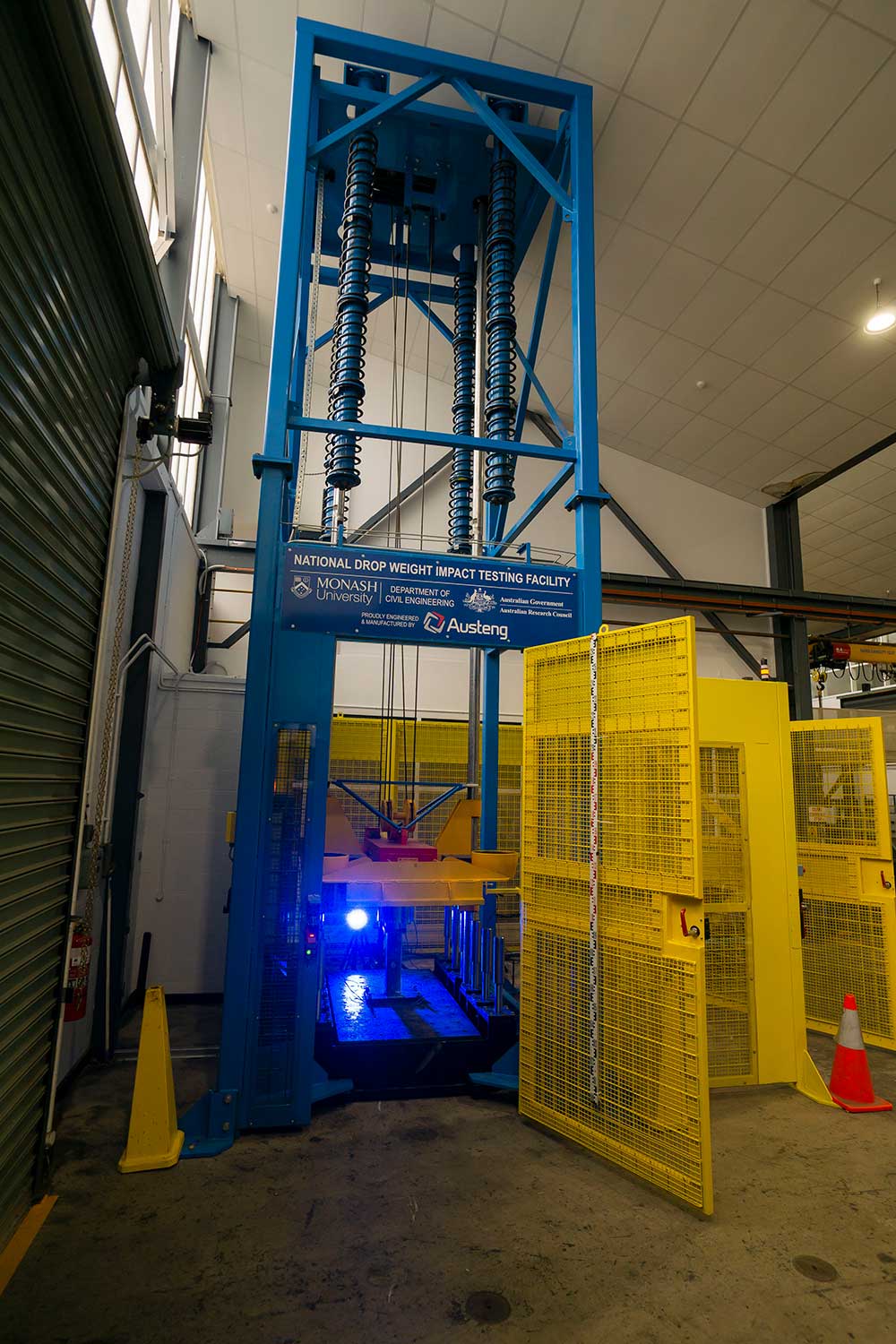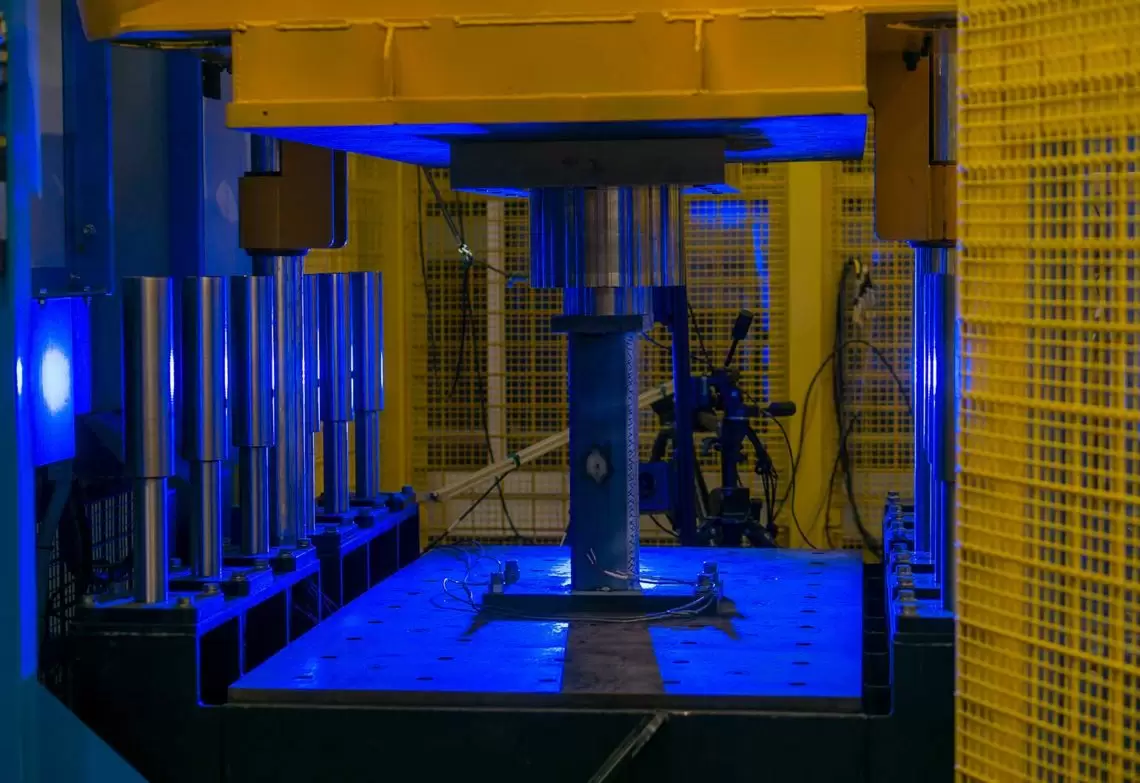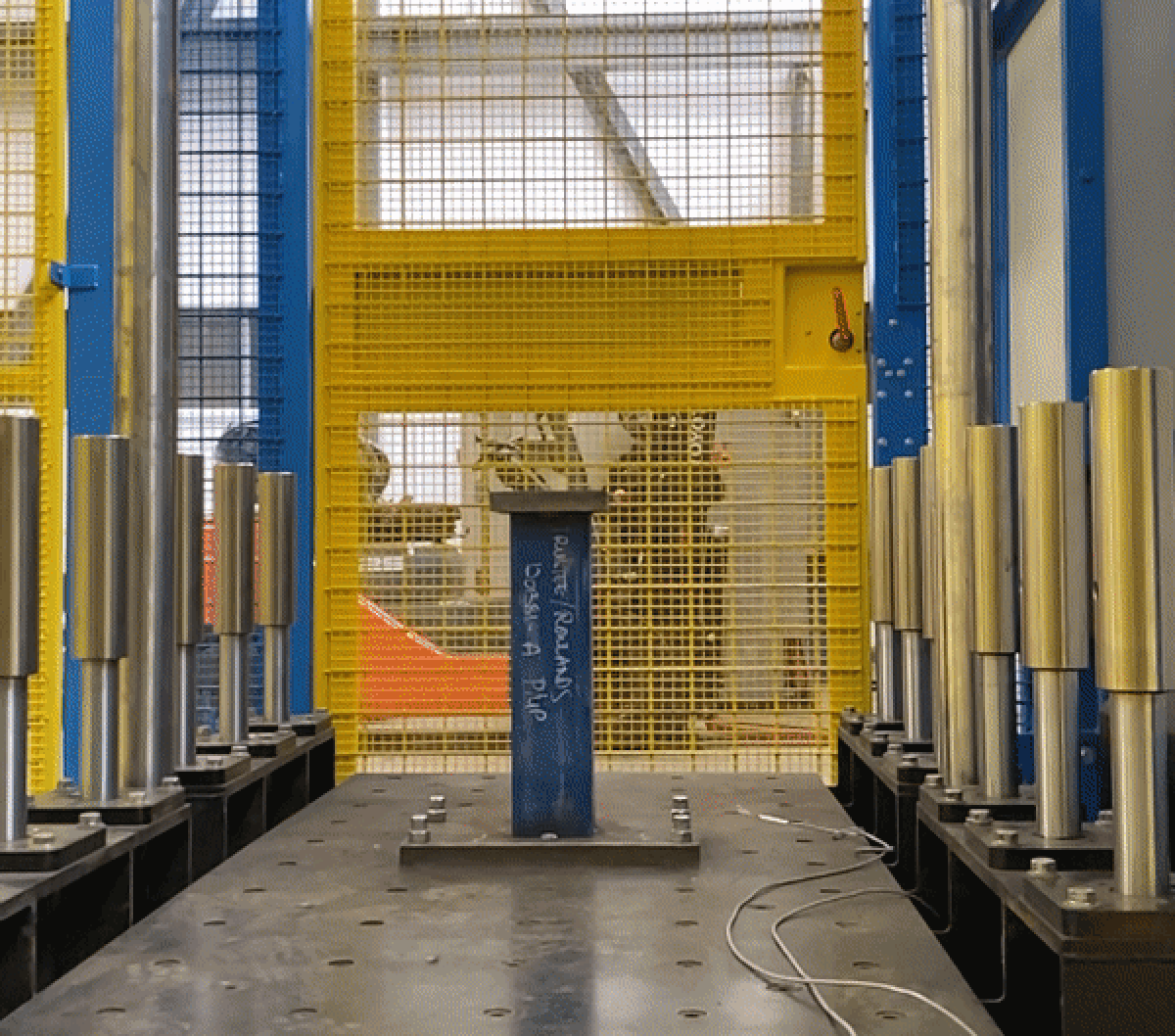The largest of its kind in Australia, the new National Drop Weight Impact Testing Facility (NDWITF) is designed to improve the structural safety of infrastructure and provides an advanced platform for researchers, industry and students to pursue innovation in design and construction.
Unveiled in December, the facility at Melbourne’s Monash University measures the behaviour of elements and sub-assemblies under high impact.
It has the capacity to assess the structural safety of high-risk infrastructure, including railway networks, tunnels and bridges, buildings and construction materials, as well as road safety barriers and protective equipment.
Head of Structural Engineering at Monash University Associate Professor Amin Heidarpour MIEAust, who led the development of the facility, said it will also support research into mining, geo-mechanics, energy and the environment.
“Fields of application and interest include construction materials under high strain loading, structural dynamics and engineering, mining excavation and rock fragmentation, and more,” he told create.
“Understanding the behaviour of construction and geo-materials under dynamic loading is essential in dealing with various engineering problems, such as protective structures design and impact cratering, excavation and mining, blasting and fragmentation, and risk management.”
Bracing for impact
The technology can observe the behaviour of elements under severe impact loading of up to two tonnes.
“It has the capacity to create an impact energy of up to 200,000 J and impact velocity of up to 18m/s,” Heidarpour said.
“Impact loading can be applied to specimens with a width of up to one metre and length of up to two metres. These features make the facility the largest of its kind in Australia.”
The main frame consists of two long columns guiding a hammer, which is tracked by a laser sensor. The weight of the hammer is adjustable up to 2000 kilograms.
In other drop weights, the impact energy is mainly created by using the gravity for which the velocity at the time of the impact depends only on the drop height. However, at the Monash facility, the impact energy is created by the gravity and a set of springs. This provides the opportunity to create various combinations of impact energy and impact velocity needed to test different materials, components and assemblies.
“In addition, all displacements recorded within each test are captured by an optical non-contact, high-speed 3D photogrammetry system,” Heidarpour said.
“This is a unique technology delivering complete 3D surface, displacement and strain results in lieu of using a large number of traditional measuring devices, such as strain gauges, LVDTs [linear variable differential transformers] and extensometers. Moreover, the impact force is accurately measured through load cells in shunt mode embedded in the hammer.”
 Risk assessment
Risk assessment
It is important to protect critical infrastructure in Australia against the catastrophic failure of construction materials caused by extreme impact conditions such as natural disasters and terrorist attacks, Heidarpour said.
“The experimental data obtained from real experiments through the facility can be used to develop and verify computational models that can provide significant benefits to research, industry and government in the development of innovative and sustainable systems for high impact risk infrastructure,” he said.
“The NDWITF will ensure Australia is at the forefront of impact engineering research in the international arena, promoting local innovation and industrial competitiveness contributing to the safeguarding Australia, saving lives and reducing losses.”
Funded by an Australian Research Council grant, the NDWITF is a Monash University-led collaboration involving six other universities, including the University of New South Wales, Swinburne University of Technology, Queensland University of Technology, University of Wollongong, University of Technology, Sydney and the University of Melbourne. Geelong-based engineering firm Austeng engineered, manufactured and installed the facility.
“Austeng was proud to be part of this important project and collaborate with Monash University and I am delighted our team was able to deliver a practical and workable solution given the stringent performance parameters set by Monash and the significant engineering challenges involved,” said Ross George, Austeng Managing Director.





What is the main purpose of the new centre for testing structural safety infrastructure?